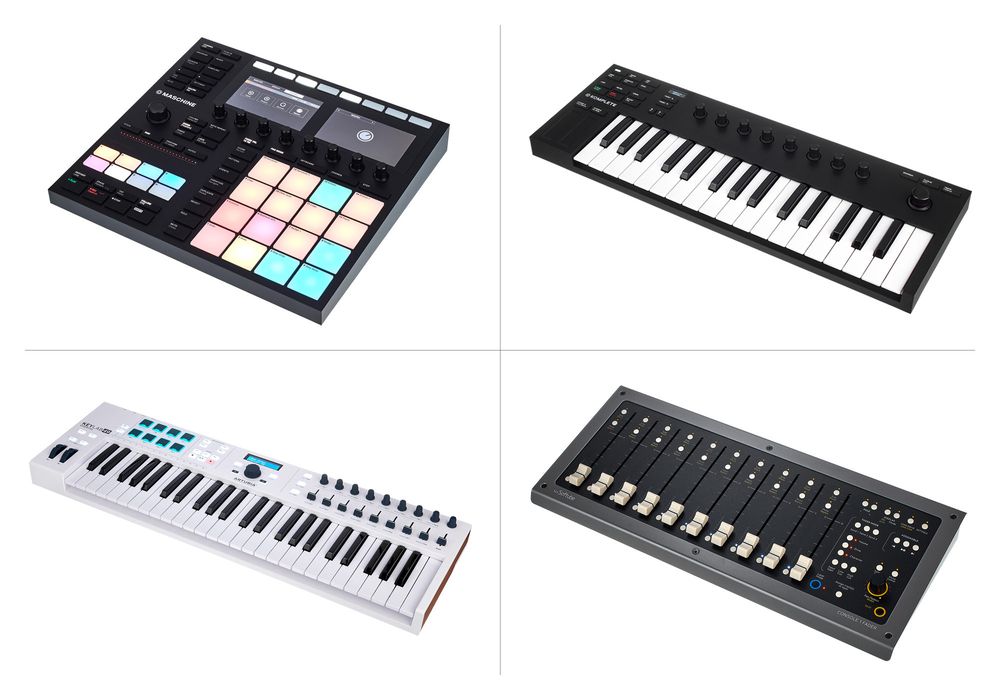7. What are Plug-in Controllers?
One disadvantage of plugins was the lack of tactile feedback for a long time, as they were mainly operated using a mouse. However, many MIDI controllers, in addition to the black and white keys of a keyboard, also have knobs for sending control data. These knobs can be assigned to the parameters of a plugin. In the past, this process was rather cumbersome and had to be done manually by the user for each plugin. However, these disadvantages are no longer present in many controllers today. For one, the controllers come with manufacturer-specific protocols that allow essential plugins to be operated within a DAW software. For example, you can directly control an equalizer or synthesizer plugin from a MIDI controller.
In addition to universal MIDI controllers, whose knobs are generally freely assignable, there are also dedicated controllers designed for specific tasks. Solutions like Native Instruments KOMPLETE KONTROL or MASCHINE, Arturia KeyLab, or Softube Console 1 fall into this category. In these integrated systems, consisting of a MIDI controller and a plugin wrapper (software interface for plugins), users no longer need to manually assign the parameters of software plugins to the hardware controls of the MIDI controller. The manufacturer has already taken care of this, allowing users to start right away. Depending on the manufacturer, you can also customize the pre-made assignments to your liking.
Software Instruments Online Guide


